<< Previous | Displaying results 2576-2600 of 6770 for "" | Next >>
Family members say goodbye to a child through a fence at the ghetto's central prison where children, the sick, and the elderly were held before deportation to Chelmno during the "Gehsperre" action. Lodz, Poland, September 1942.
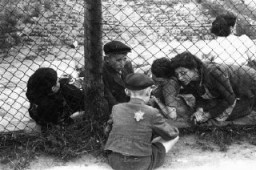
Two young brothers, seated for a family photograph in the Kovno ghetto. One month later, they were deported to the Majdanek camp. Kovno, Lithuania, February 1944. Pictured are Avram (5 years) and Emanuel Rosenthal (2 years). Emanuel was born in the Kovno ghetto. The children, who were deported in the March 1944 "Children's Action," did not survive. Their uncle, Shraga Wainer, who had asked George Kadish to take this photograph, received a copy of it from the photographer after the war in the Landsberg…
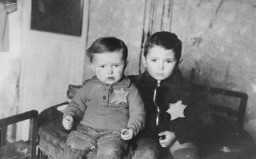
Jewish children sheltered by the Protestant population of the village of Le Chambon-sur-Lignon. France, 1941–44.
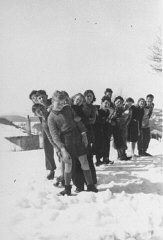
Father Bruno with Jewish children he hid from the Germans. Yad Vashem recognized Father Bruno as "Righteous Among the Nations." Belgium, wartime.
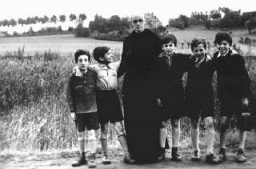
Two young cousins shortly before they were smuggled out of the Kovno ghetto. A Lithuanian family hid the children and both girls survived the war. Kovno, Lithuania, August 1943.

Sinaida Grussman was photographed in the Kloster Indersdorf children's center after the war. The picture was taken in an attempt to help locate surviving relatives. Such photographs of both Jewish and non-Jewish children were published in newspapers to facilitate the reunification of families. Germany, after May 1945.

Jewish orphans arrive at the Marseille railroad station, en route to Palestine as part of postwar Brihah movement. Marseille, France, March 25, 1948.
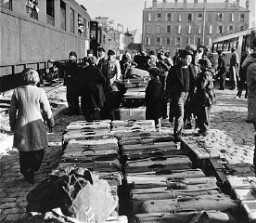
A dress worn by hidden child in Baarn, the Netherlands. The dress was donated to the United States Holocaust Memorial Museum in 2002 by Vera Waisvisz-Reiss.
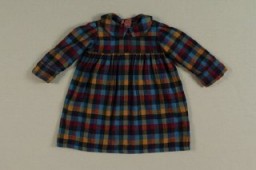
Two German Jewish families at a gathering before the Nazi rise to power. Only two people in this group survived the Holocaust. Germany, 1928.
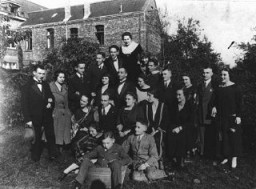
Young Jewish men and women pose for a photograph in the Piotrkow Trybunalski ghetto. Poland, 1940. Pictured from left to right are: Abram Zarnowiecki, Rozia Zarnowiecki, Mania Freiberger, Moniek, Rachel Zarnowiecki, and Chaim Zarnowiecki. All those pictured died in the Holocaust.
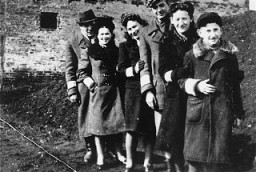
A brother and sisters, members of a Jewish family. One of the sisters pictured here, along with other family members, did not survive the Holocaust. Nove Zamky, Czechoslovakia, May 1944.
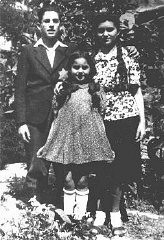
Portrait of members of a Hungarian Jewish family. They were deported to and killed in Auschwitz soon after this photo was taken. Kapuvar, Hungary, June 8, 1944.
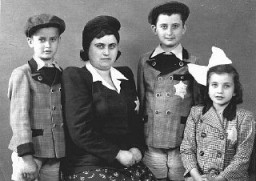
German Jews at forced labor in Dachau. Photo taken during an SS inspection. Dachau concentration camp, Germany, June 28, 1938.
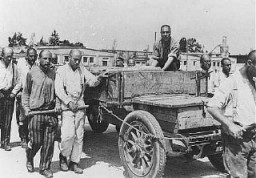
Newly arrived prisoners at the Buchenwald concentration camp. Buchenwald, Germany, 1938-1940.

Exterior view of barracks at the Ravensbrück concentration camp. Ravensbrueck, Germany, between May 1939 and April 1945.
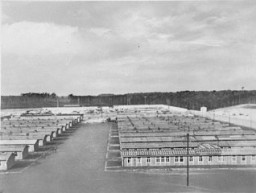
Jewish prisoners in the Drancy transit camp. France, between 1941 and 1944.

View of the stone quarry in the Gross-Rosen camp, where prisoners were subjected to forced labor. Gross-Rosen, Germany, 1940-1945.
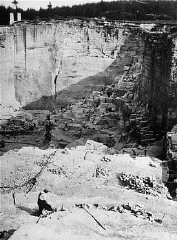
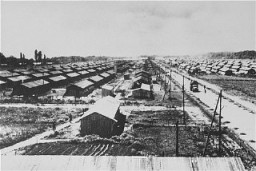
View through the barbed wire of the prisoner barracks in the Flossenbürg concentration camp. Flossenbürg, Germany, 1942.
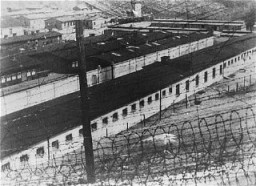
Shaving an inmate upon arrival at the Sachsenhausen concentration camp. Germany, February 1941.
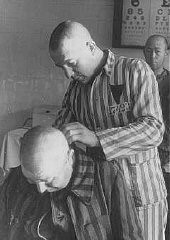
A sign outside the Breendonk transit camp warning that trespassers will be shot. Breendonk, Belgium, 1940-1944.
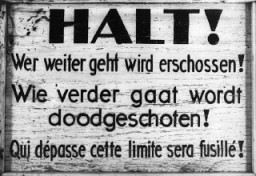
Forced labor in the quarry of the Mauthausen concentration camp. Austria, date uncertain.
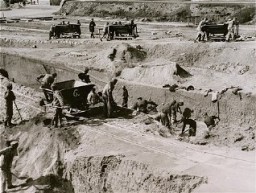
Deportation from the Westerbork transit camp. Members of the Jewish police are seen in the photograph. The Netherlands, 1943–44.
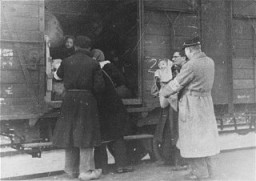
Jews from the Lodz ghetto are loaded onto freight trains for deportation to the Chelmno killing center. Lodz, Poland, 1942–44.
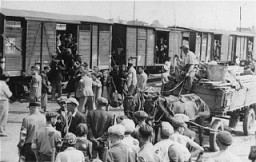
A section of the prisoner barracks in the Majdanek camp. Photograph taken after the liberation of the camp in July 1944. Poland, date uncertain.
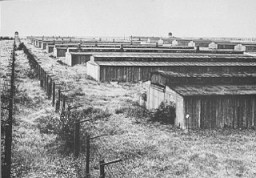
We would like to thank Crown Family Philanthropies, Abe and Ida Cooper Foundation, the Claims Conference, EVZ, and BMF for supporting the ongoing work to create content and resources for the Holocaust Encyclopedia. View the list of donor acknowledgement.